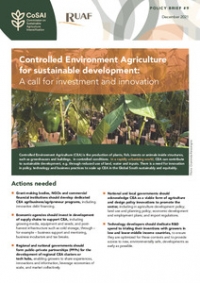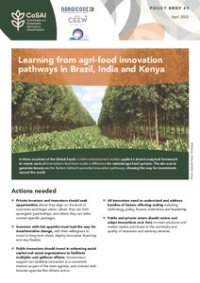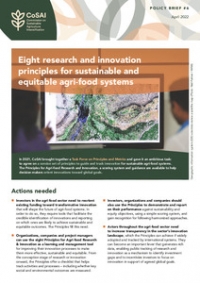This is the first of a series of articles related to the establishment of the WLE Focal Regions.
The WLE Focal Region experiment begins
“Bureaucracy destroys initiative. There is little that bureaucrats hate more than innovation, especially innovation that produces better results than the old routines. Improvements always make those at the top of the heap look inept. Who enjoys appearing inept?”
― Frank Herbert, Heretics of Dune
We are all searching for ‘innovation’. It seems to be bandied about in every meeting and in every project proposal. The CGIAR Research Program on Water, Land and Ecosystems (WLE) even had a recent call for an ‘innovation fund’ – we got a lot of comments about ‘what is innovation’.
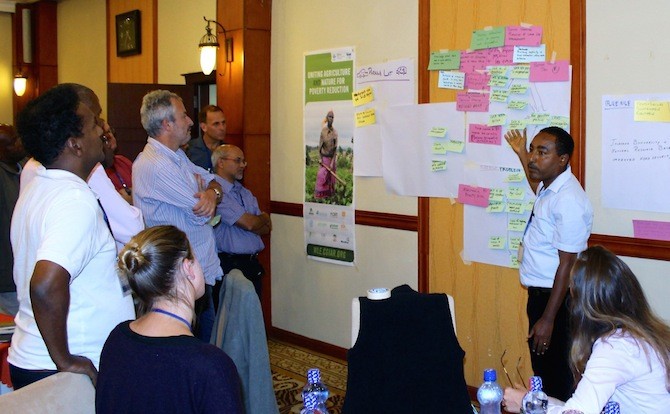 Writeshop participants work in groups based on sub-regions. Three projects from the Blue Nile map intended outcomes together. Photo: Thor Windham-Wright/IWMI
Writeshop participants work in groups based on sub-regions. Three projects from the Blue Nile map intended outcomes together. Photo: Thor Windham-Wright/IWMI
This got us thinking – maybe we shouldn't be searching for innovation – like that old Zen quote – but rather find ways to foster it. This was WLE’s goal when it designed its focal region approach.
WLE is establishing regional programs in the Greater Mekong, Ganges, Nile River Basin and East Africa and Volta and Niger River Basins. These programs are expected to engage with and provide sustainable solutions to large-scale water and land regional and national investments within an ecosystem framework.
Complex and tough challenges like this call for bold steps, and some risk. So WLE has taken an unexpected approach for a CGIAR program. It has opened up the bidding to all interested parties. Each focal region went through a transparent and independent process to select a number of strategic projects to help fulfil specific regional objectives. From August to September, the open call was carried out to solicit Expressions of Interest (EOIs).
The call was special in that it had some specific requirements. There needed to be more than three partners on each call; a partner could lead only one EOI – but could partner on as many EOIs as they wanted. In addition, at least 40% of funding had to go to national or regional partners and at least 20% towards gender related research. Finally each EOI had to address the regional challenge, focus on the identified topics and fit within WLE’s ecosystem framework.
The results blew us away.
Almost 300 expressions of interest were received from international, regional and national organizations across the four regions (Mekong 104; Nile 80, Volta 75 and Ganges 25). After a rigorous and transparent review process, 34 projects were selected of which only 8 are led by CGIAR centers, though CGIAR centers are partners on a number of others.
These projects are now going through an intensive writeshop process. The objectives of the writeshops are to develop full proposals, establish linkages and synergies amongst the projects and ensure the collective set of proposals reaches regional outcomes.
What has this done? While many CGIAR researchers were frustrated that they had to openly compete for this funding, the competitive process led to the first step in innovation in helping us identify new ideas and bring new partners into the game. The writeshops are fostering innovation by ensuring: diversity, connectivity and openness.
Diversity
WLE was searching for new partnerships but it is hard to find new partnerships if you are working with the same groups of people. The 26 new lead partners, each bring in a number of new partnerships that we would have never had. For instance, Kilmo Trust, an East African Think Tank is leading a project focused on ensuring regional trade is underpinned by sustainability principles. It is bringing in new partnerships with regional trade organizations and access to regional bodies.
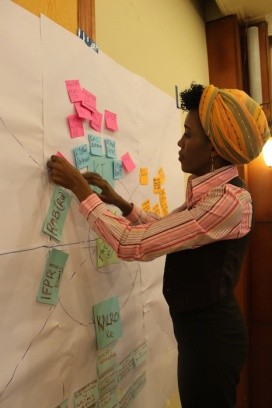 Participants map stakeholders across projects in the White Nile sub-region. Photo: Thor Windham-Wright/IWMI
Participants map stakeholders across projects in the White Nile sub-region. Photo: Thor Windham-Wright/IWMI
Connectivity
The writeshop process has encouraged connectivity, whether by defining common next users or through cross-fertilization of methods.
In the Mekong, there are three different projects working on the topic of healthy landscapes. The diversity of approaches means that organizations can learn from one another. At the writeshop, researchers compared methods and came up with common frameworks for sharing results. In one instance a project even requested support to use another project’s methodology. If we would have had just one large grant to one consortium, such cross fertilization would have never occurred.
In the Nile, three projects are working in the Ethiopian highlands and realized they are working with common partners and stakeholders. By connecting their projects they are expecting to have greater engagement with government agencies, donors and NGOs working on sustainable land management and importantly avoid overlap.
Openness
Finally, the writeshops have fostered openness and flexibility. WLE’s research for development (R4D) approach calls for projects in four focal regions to collectively contribute to the wider goals and outcomes identified at the regional level. This means that they needed to adjust their projects’ outcomes and strategies to make sure they were collaborating with other projects.
WLE is looking for not only research outputs – models, publications, journal articles – but also innovative communication and engagement strategies which are appropriate for identified next users. Almost all projects have adjusted their initial ideas based on new thinking in the writeshops and begun to plan new types of communication strategies.
The incentives were clear – more focused project proposals linked to regional priorities were a pre-requisite in reviewing the proposals. In addition, many of the new partners are excited at the prospect of working with CGIAR-related research that is on-going in these regions.
Bringing in new ideas, partners and knowledge can be unsettling and scary. It means doing things differently and maybe challenging assumptions and ways or working. But opening the system allows for new ideas, new connections and interactions – the pre-requisites for incubating innovation.
For more information, contact Michael Victor at m.victor(at)cgiar.org

















